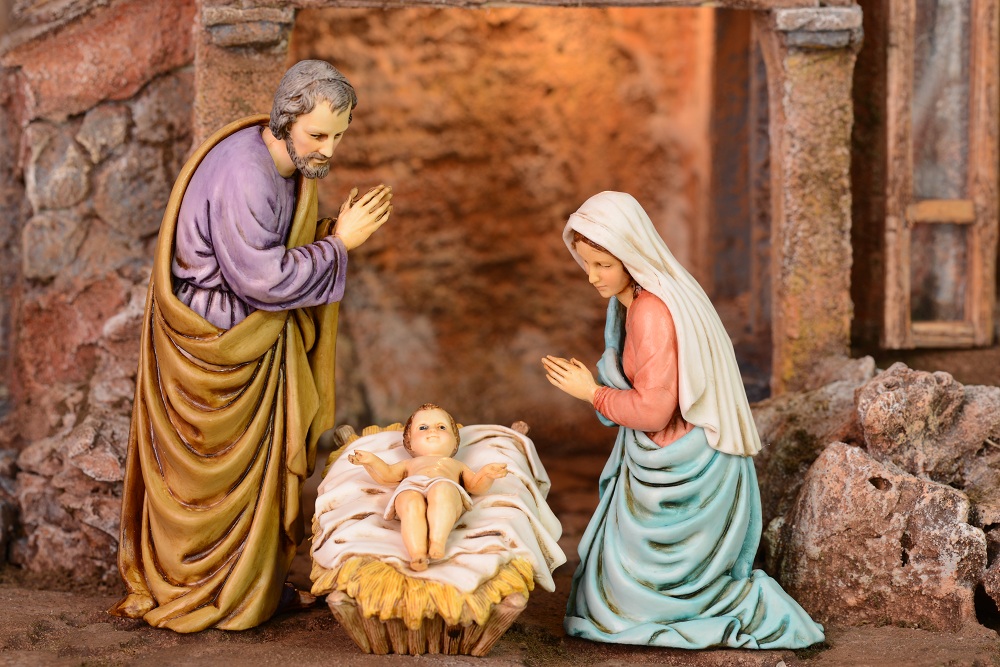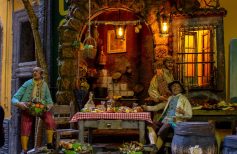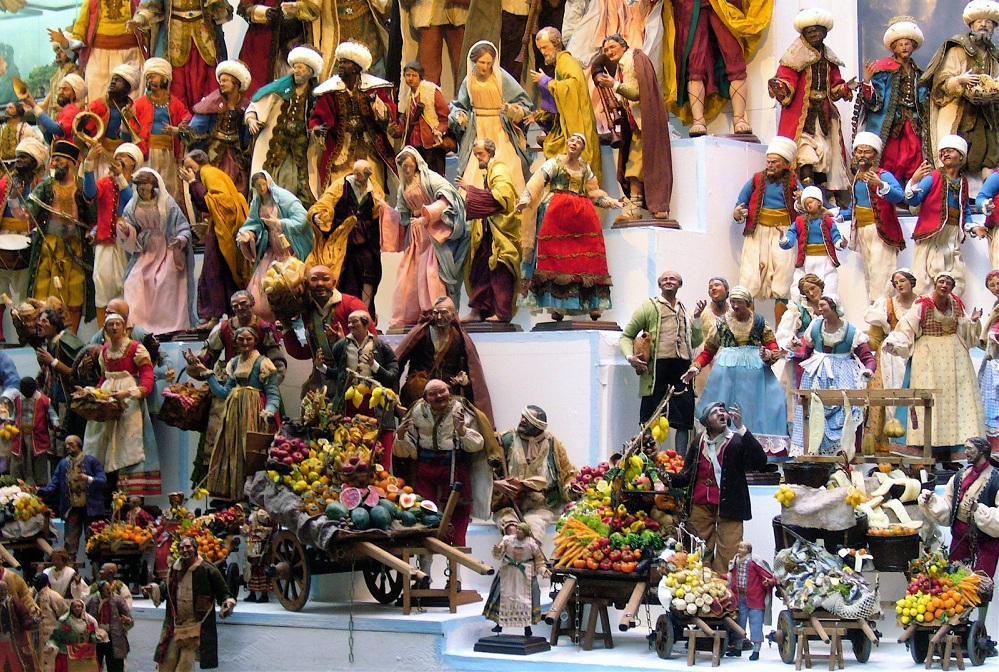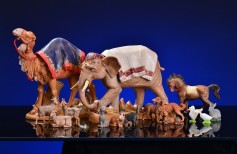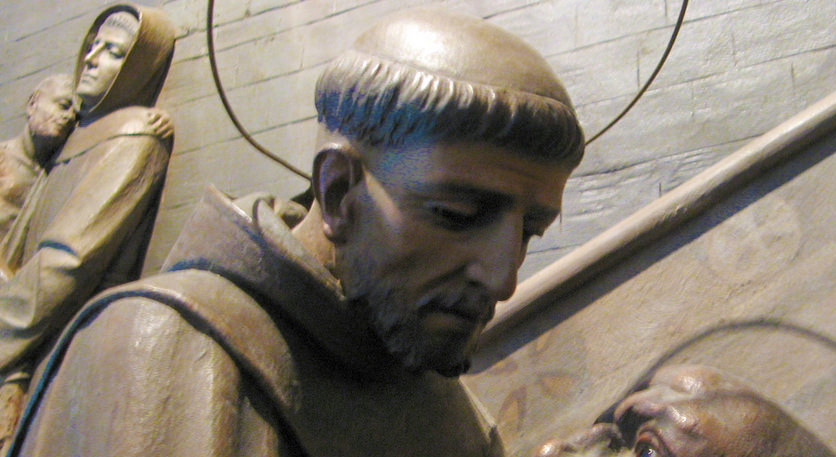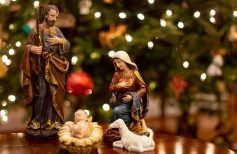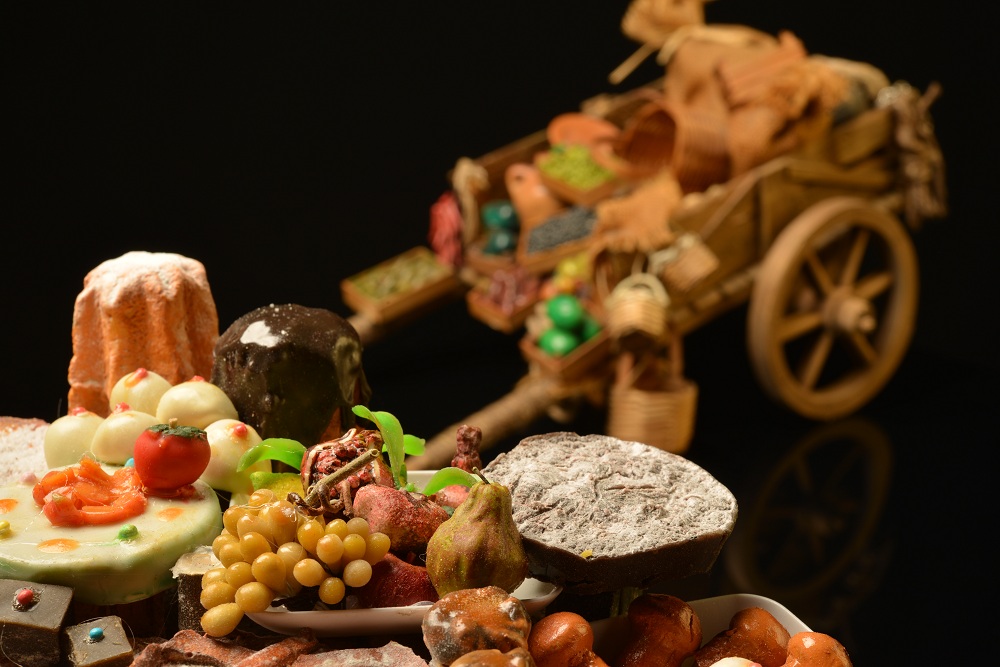Contents
When St. Francis of Assisi had the idea of reproducing the birth of Jesus, his intention was to make an important and beautiful passage of the Gospels available to the poor and illiterate, unable to read for themselves the events which are so valuable for believers. Perhaps this stems from the popular tradition of the nativity, which has never been lost at all, even when noble families or rich abbeys were the only ones who could afford to commission one.
The nativity is a popular devotion event created by normal people for normal people, and over the centuries it has acquired an identity that, in its infinite regional variations of our country and the world in general, remains tied to a world that is more to do with the symbols than words.
Every character in the nativity is thus above all the incarnation of a symbol, which then, over time, has been associated with stories and legends that have given it a ‘real’ life, closer to popular sensibility. Here is a short list of 10 nativity figurines that can not miss in your nativity.
1 Giuseppe and Maria
Let’s start with Joseph and Mary, archetypes of the Father and of the Mother; the first of which is dressed in dark and humble colours to emphasise his devotion and submission to the divine will who is, at the same time, represented as a protective figure to Jesus and Mary. The latter, dressed in sky-blue, expresses an ethereal, delicate spirituality, an absolute maternal sweetness in her love for the fruit of her womb as a mother and at the same time as a faithful servant.
2 The ox and the donkey
The symbolic origin of the ox and the donkey is to be found in the Old Testament, or maybe even in pagan tradition. In the first case, it should draw from the words of Isaiah about the lighting of the Child virtues: the donkey represents the pagans, the ox the wise and the learned, both unable to embrace it because they are blinded by the lack or excess of knowledge.
3 Shepherds
They represent humanity welcoming the birth of Jesus, the poorest and most miserable humanity, as the poorest and mysteries among the nations were considered the shepherds. And they, Luke and Mark, were chosen by Jesus as the first spectators of his birth.
4 The fisherman
Perhaps linked to the figure of Peter, to his being a ‘fisher of souls‘, or in general to fish symbolism used by early Christians.
5 The washerwoman
Symbol of purity and purification, similar to the figure of the midwife in the Eastern tradition, and close to the symbolism of Mary, called to witness to and glorify her virginity.
6 The woman with the baby, or the gypsy with the baby
Legend has it that a young virgin wanted above all else to see the baby, but the angels didn’t let her because it was forbidden for virgin women to be present for childbirth. So the girl showed up at the cave, a large stone wrapped in a blanket like a baby holding her arms arms. In the presence of the Holy Family she moved the stone and it turned into a real boy.
7 The Inn.
The inn and its occupants represent a kind of hellish place where humanity expresses its weaknesses and vices, excesses and recklessness. The Oste, in the tradition, it is therefore a devil tempting fate that would distract the audience from the contemplation of the Cave.
8 The card players, or the two “cronies”
In Neapolitan tradition they were considered to be personification of Carnival and Death, playing with the fate of men with unpredictable and uncontrollable rules.
9 The Wise Men
Each of them has a different meaning: Balthazar, symbol of the night, with his the gift of incense represents the divinity of the Child; Caspar, symbol of the day, recognises the kingship with his gold; Melchior, symbol of the dawn, establishes the rule of the Child on time by myrrh giving him death.
10 Benin, the sleeping shepherd
Benin sleeps and does not realise what is happening, but at the same time, legend has it that he’s dreaming about the nativity to make it real. Figure full of powerful and ancient symbolic meanings embodies the Revelation given by the Faith.

